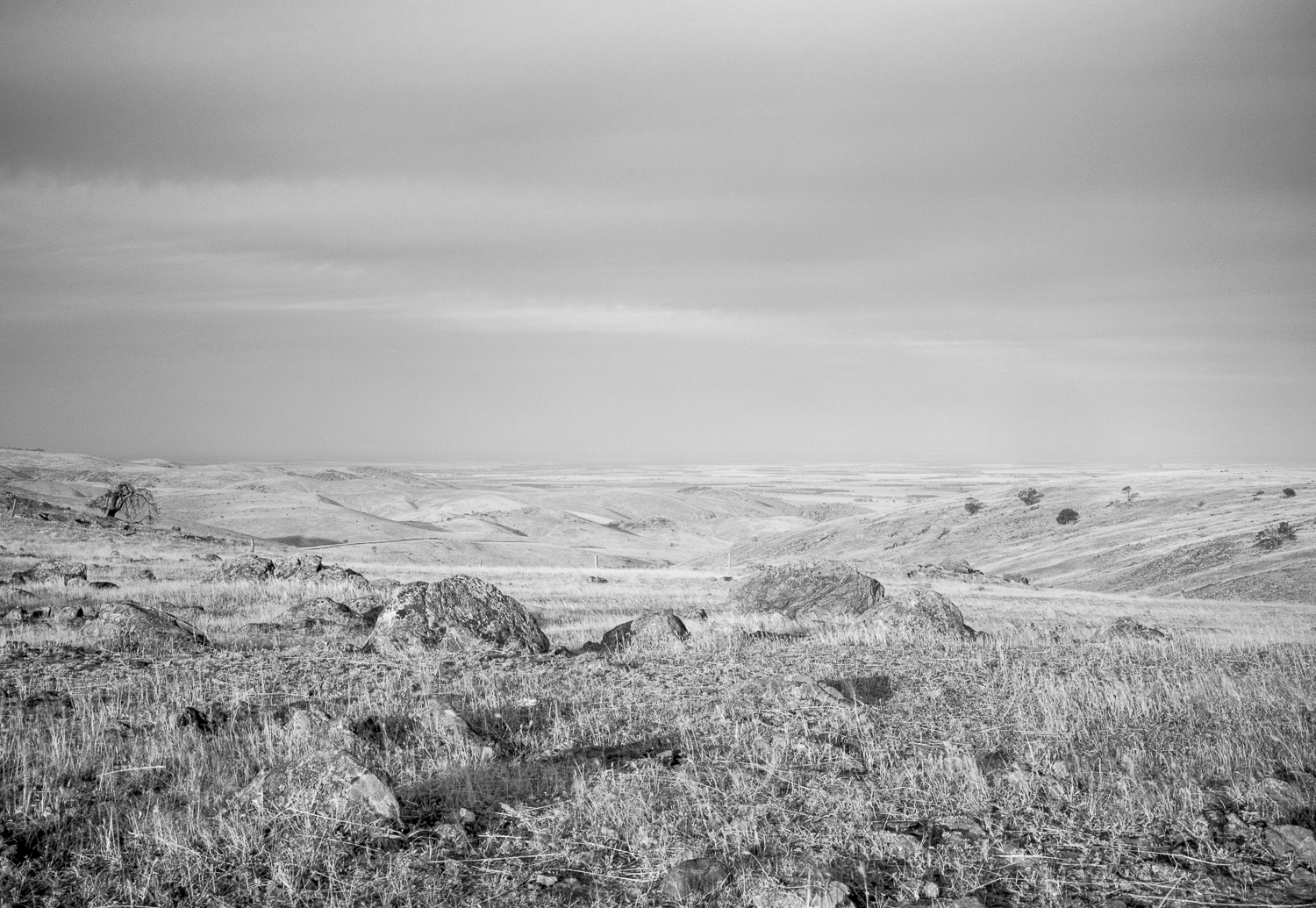Once I’d purchased a VW Kombi I was able to make little road trips outside of the city, I started exploring around the Adelaide Hills and the Mt Lofty Ranges. I was stunned to see how small the city of Adelaide actually was sitting on the Adelaide plains. It really was an isolated, provincial city when compared to Melbourne and Sydney. It was easy to see how it was becoming marginalised.

I was shocked by how barren or stripped the landscape was. The colonial settler society’s ethos of men’s mastery of nature resulted the trees being few and far between in many places. It was a reminder of the significance of agriculture prior to the emergence of manufacturing after 1945. Most land clearing occurred from the turn of the 19th century to the mid-20th century. The post World War 2 land development boom has seen the clearance of hundreds of thousands of hectares of native vegetation in the agricultural regions of the State. By the 1980s over 70 per cent of the land had been cleared. The land tax favoured the clearing of native vegetation not its conservation.
The landscape had been cleared all the way from the Mt Lofty Ranges to the River Murray and then beyond the river through the South Australian Mallee with icon of the plough, extensive dryland farming and theist storms that blow the topsoil of the earth away. In the 1980s the farmers were still deeply opposed to government controls on land clearance without government consent. Scrubland should be turned into productive agricultural land. Land clearing was still seen as progressive, there was the general view that land was wasted unless it was developed and nature had to be tamed to ensure civilisation. The conflict between settler colonial society and nature and the natural world lies at the heart of rural Australia.

The attempts by the colonial settler society to achieve progress by imposing the greener landscapes of the English homeland was clung to despite failure after failure. This faith resulted in the land in South Australia being severely modified by intensive land use which after 1945, involved mechanisation, fertilisers , pesticides and herbicides to increase yields. There seemed to be little awareness of the environmental cost attached to wholesale land clearance, a concern for the extinction of native species of flora and fauna or an understanding of ecology or any acceptance of the limitations of the land. The indigenous people were written out of white settler history.
In the Mount Lofty Ranges close to the state’s primary urban centre of Adelaide) only 10% of woodlands remained when broadscale clearing largely ceased in 1980. It was not until 1991 that the Native Vegetation Act of South Australia was passed, effectively banning any new vegetation clearance across the state. In the Adelaide plains region surrounding the Mounty Lofty Ranges, the situation is even worse, with only 4% of the original natural vegetation remaining. Native forests are now estimated to cover only 9% of the state’s total area.Much of the remaining vegetation is highly fragmented, disturbed or ecologically compromised, to the point where many plant and animal species have already gone extinct or are in immediate danger of extinction.

In the Mount Lofty Ranges of South Australia in particular, biodiversity losses have been severe. At least 132 species of animals (including 50% of the mammal fauna) and plants have become locally extinct, and at least 648 non-indigenous species (mostly plants) have been introduced. This is a most damaged ecosystem, and it could be suggested that the catastrophic losses there should designate the region as a ‘canary’ landscape for temperate woodlands around Australia, given the lag times in extinctions generally seen following forest disturbance.
Despite agriculture having a significant negative impact of the regional ecosystem there was little sign of restoration of this denuded landscape with its dried soils to combat the ravages of deforestation.
2 Responses
Landscape loss + nostalgia – Our Waters Our Country
[…] –eg., salt ladened landscapes, dried out wetlands, low flows in our rivers, on-going land clearing and the loss of biodiversity-–is that of nostalgia, or a yearning for what has been […]
contemporary Australian roadtrips - Thought Factory
[…] images on my On the Road Tumblr blog. There are some more from the 1980s on my archival blog. Even though it is envisioned to be a book, this project is based on several […]